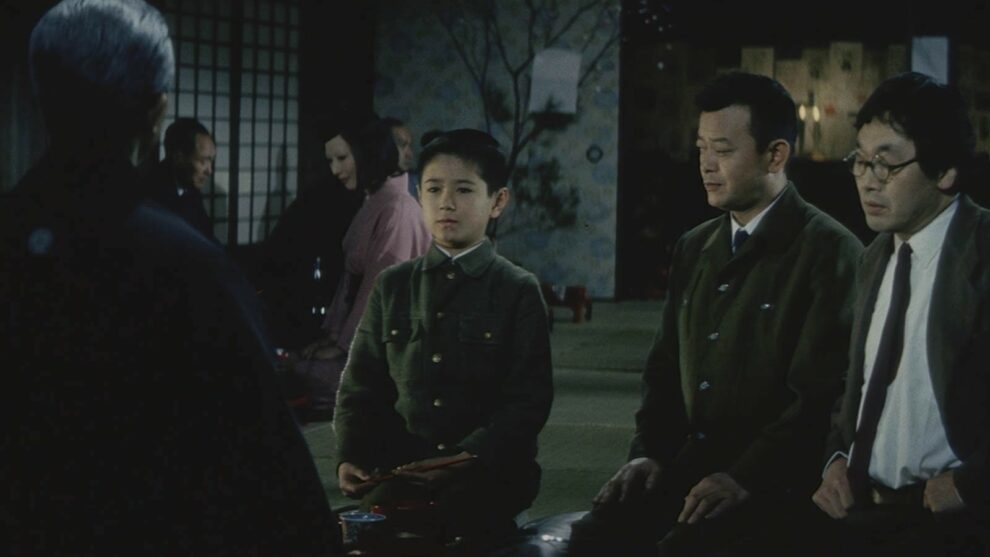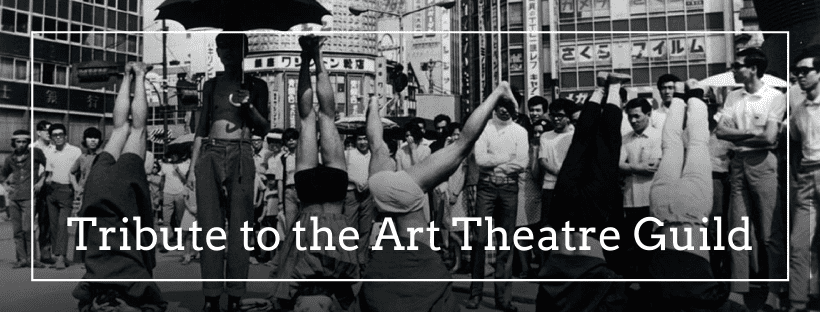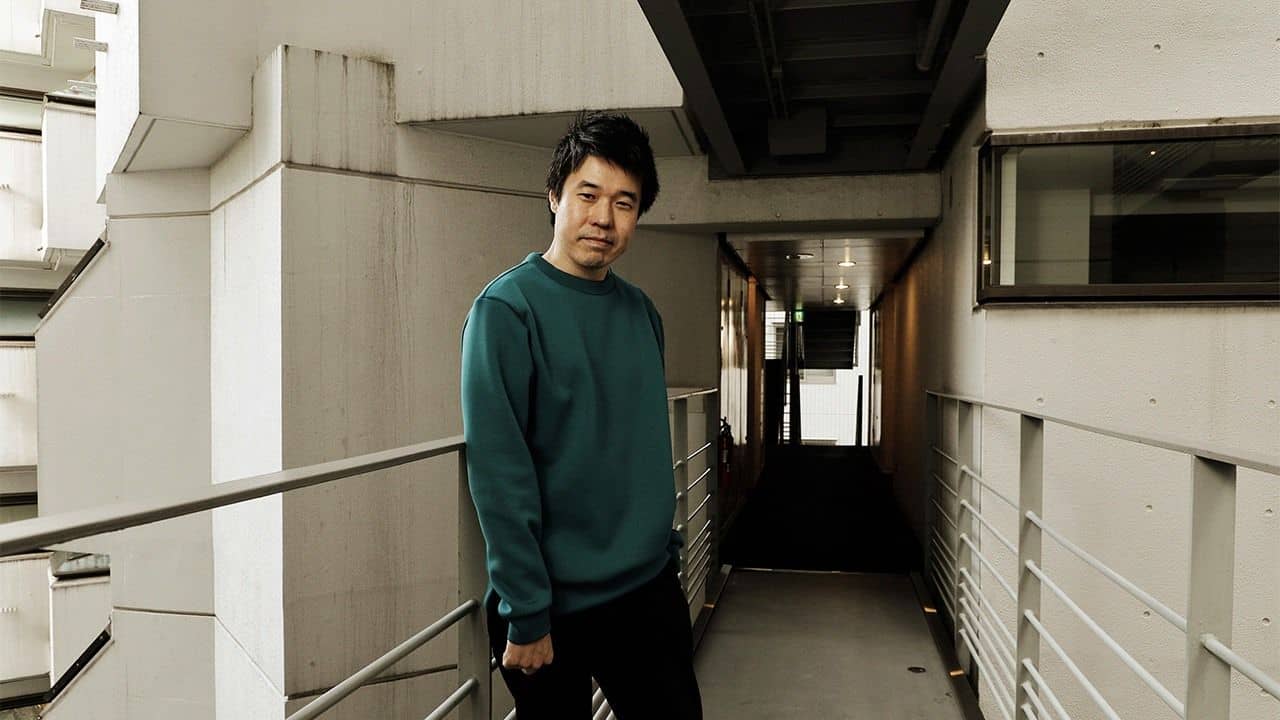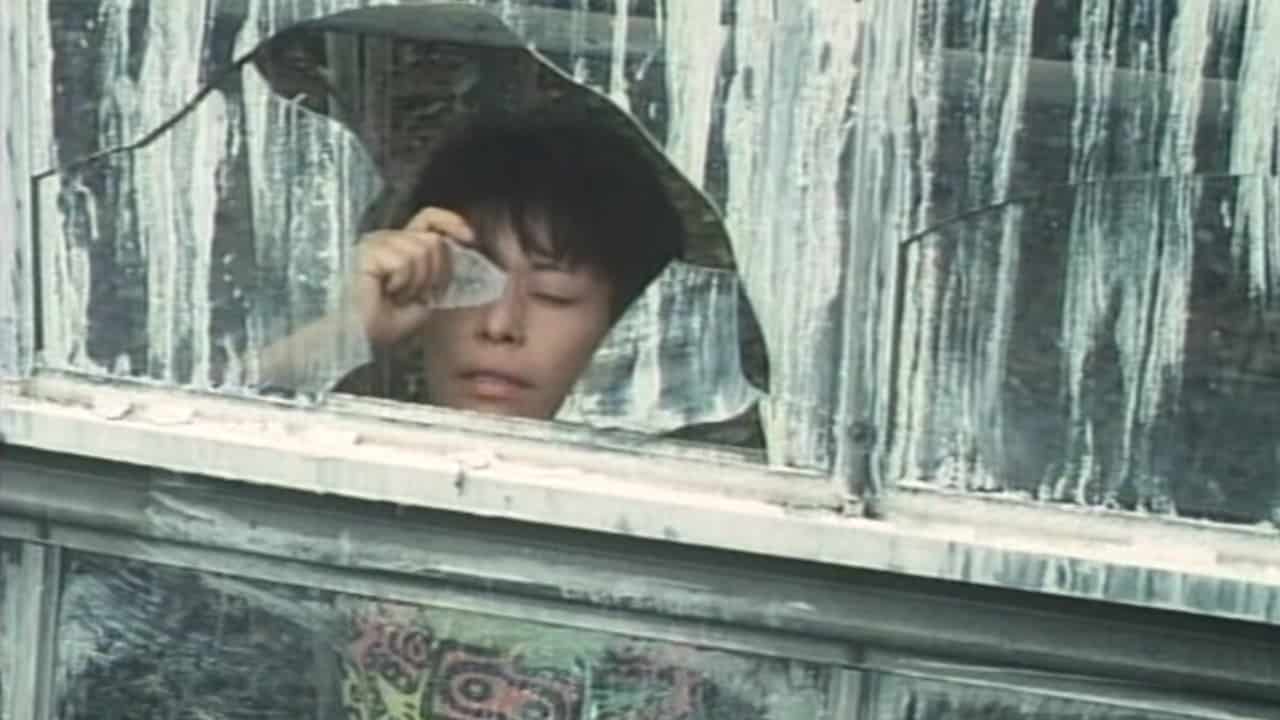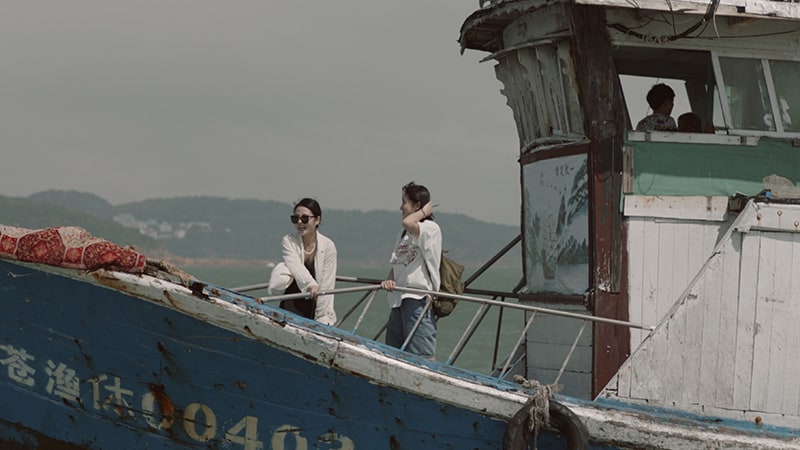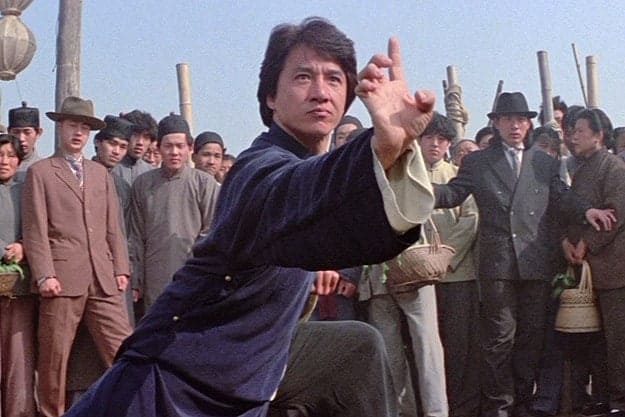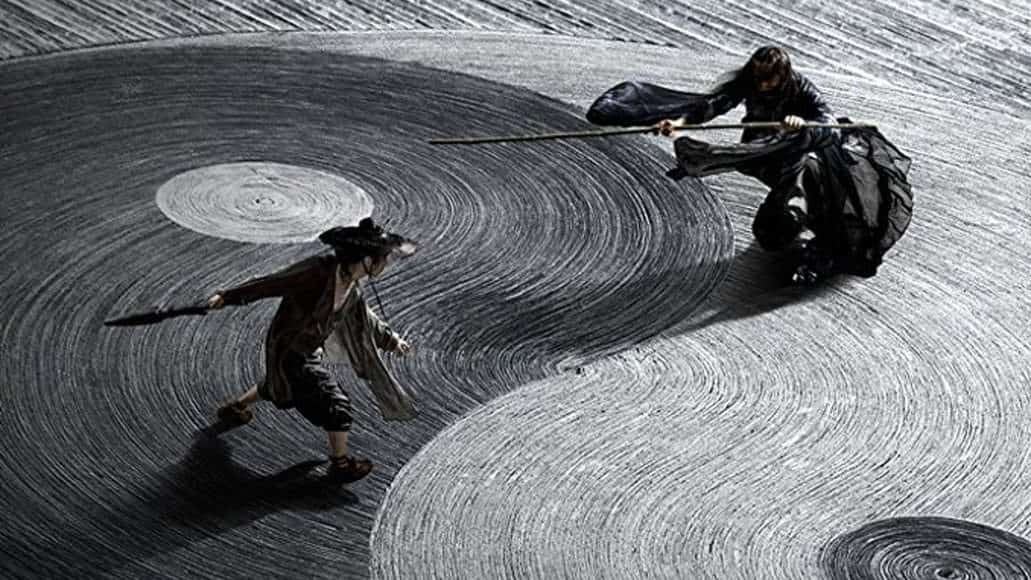Signaling the 10th anniversary since the introduction of Art Theatre Guild, “The Ceremony” is one of the best works of Nagisa Oshima and one of those films that highlights how multilayered, both audiovisuallly and contextually, cinema can be. The movie won multiple awards in 1972, both from Kinema Junpo and Mainichi Concours.
The story begins with Masuo Sakurada, a young man, receiving a shocking telegram from his cousin Terumichi. Not sure if it is true or not, he embarks on a trip towards his cousin's cabin, along with his cousin Ritsuko, in order to discover the truth. As the fact that, for him, Ritsuko is more than a relative, the terrible story of the Sakuradas also comes to the fore, as the trip proves to be also one down a terrible memory lane.
In that fashion, the movie unfolds in three axes. The first and most minor one is the aforementioned present. The second and lengthiest focuses on the past, starting with the time he and his mother were repatriated to Japan from Huludao, carrying with them the burden of a deceased father and Masuo's younger brother, while having to face prejudice and racism from all sides. The third focuses on various death and marriage ceremonies, most of which take place in the same room in the Sakurada family household.
Check also this interview
Oshima uses the story of the family as a metaphor for Japan, in a critique that only grows harshest as more of the past is revealed, focusing on how the individual is essentially completely disregarded for the sake of family and lineage, but also extending on a number of other issues. In that fashion, the issues Masuo and his mother face as soon as they return, with him expected by Kazuomi, his grandfather and undisputed leader of the family, to live for both himself and his deceased brother, essentially baring double the burden on him, and his mother facing suspicions of having become a ‘relief woman' during the war. Furthermore, Masuo finds himself repeatedly having to sacrifice his dreams and wishes for the ‘good of the family', with the grandfather fully controlling his and all the family members' lives, including their erotic relationships and their marriages.
That in order to keep the line clear, incest is essentially forced, highlights how the particular institution functioned at the time (before and after WW2). Even more surprisingly, Oshima has Masuo actually succumbing to this tendency along with Terumichi, with both lusting for Satsuko and later Ritsuko, both members of the extended family. This aspect also leads us to a comment regarding the place of women, who were essentially slaves to the whims of men, not having any control over their lives, including their bodies, with the fact that a number of them find solace only in death or suicide, highlighting the fact in the most appallingly clear way.
As such, the dynamics that govern the relationships of the family members could be synopsized as such: the older generation desperately try to retain tradition and present a facade of greatness while everything is rotten (and rotting) on the inside, and the younger generation find themselves unable to speak up, eventually succumbing to forces that seem much higher than them, and again, suicide emerging as the only solace. The pressure essentially everyone experience under Kazuomi results in a constant tension in the film, which is mirrored in Masuo's story and his overall attitude through the years. Oshima, however, also takes care of completely ridiculing the whole concept, with the episode where the young man has to endure a full wedding ceremony even though the bride never appears, just to keep appearances, showcasing the whole concept in the most mocking, but also dramatic fashion. One could say that the accusation towards the then previous generation is palpable (in a theme that actually continues in Japanese cinema even today) but Oshima extends his accusation towards the youth also, for their lack of will and their overall inability to break their bonds.
As such, and throughout the many episode in the movie, the character of the Japanese can be synopsized with the following terms: drunk, incestuous, hypocritical, crude, anti-communist, deluded, ridiculous, racist and misogynistic, with Oshima painting a truly awful picture of the people of the time.
Apart from context, the movie also thrives in cinematic terms, through a rather artful and meaningful experimentation. The non-linear narrative is implemented excellently in the hands of editor Kenichi Uraoka, with the story essentially revolving around the various ceremonies (marriages and funerals) which highlight both the character of the protagonists and the aforementioned comments. These scenes have a distinct, stage play/avant garde essence that is occasionally quite impressive to the eye, with Oshima and DP Toichiru Narushima using symmetrical framing, horizontal movement, tracking shots and wide-angle lenses to present the dynamics within the family and the occasional ridiculousness of the proceedings.
Some instances do remind of Ozu's style in “Tokyo Story” but the whole approach here, also in terms of context, looks more like mocking than mimicking, considering that Oshima has been rather vocally against him and Mizoguchi throughout his career. Also of note is the use of sound, as mirrored in the repeated voice-overs, which occasionally replace the actual voices of the actors, in another rather intelligent “trick” here.
Regarding the acting, the one who truly stands out is Kei Sato as Kazuomi, with him presenting a ‘noble villain” type of individual in a style that is majestic and fittingly excessive. Atsuko Kaku as Ritsuko and Akiko Koyama as Satsuko are also excellent in the way they function as both apples of discord and slaves to the whims of men, with their apathy during the erotic scenes they find themselves in being among the best moments of the movie. Kenzo Kawarasaki as Masuo has the meatiest part, but I found his acting frequently subpar, with his constant ‘sad face' becoming annoying to watch after a time.
This, and the hyperbolically lengthy singing sequences are essentially the only faults of “The Ceremony”, a movie that is nothing less than a masterpiece.


